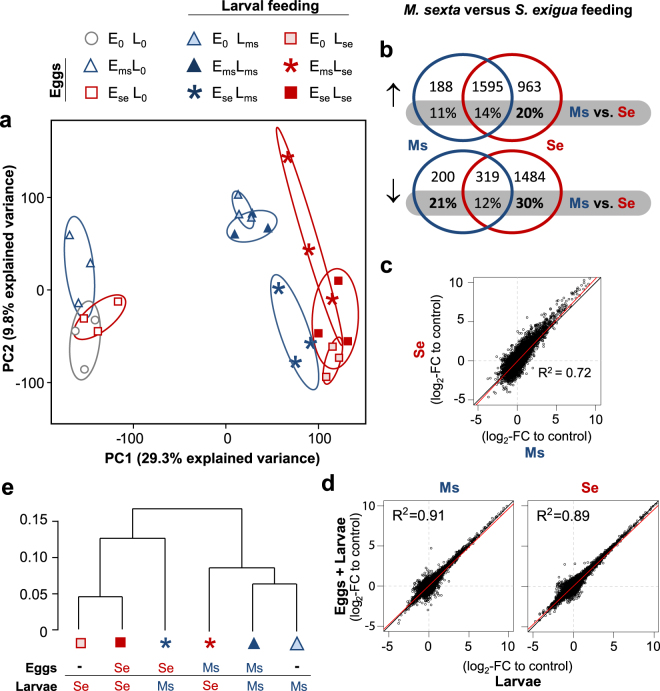Figure 2.
Species-specific effects of oviposition and larval herbivory on N. attenuata’s transcriptional regulation. (a) Principle component analysis (PCA) of transcript profiles of N. attenuata in response to either S. exigua (Se) or M. sexta (Ms) oviposition and/or larval feeding. The legend above presents all symbols used to depict all treatments in the 3 × 3 factorial design and treatment replicates are outlined by 68% confidence intervals. (b) Venn diagram comparing the numbers of genes that were regulated in the microarray analysis by either S. exigua or M. sexta larval feeding (relative to control plants) and those significantly different between the two (at P < 0.05 after correction for false discovery rate and a log2-fold change (FC) > 1). (c) Scatter plots of the log2-FC in gene expression in response to larval feeding by M. sexta and S. exigua. (d) Scatter plots of the log2-FC in gene expression in response to larval feeding on plants oviposited and non-oviposited by conspecific moths (left: M. sexta, right: S. exigua). (e) Hierarchical clustering of the log2FC in gene expression (relative to control plants) of all feeding-induced treatments.

